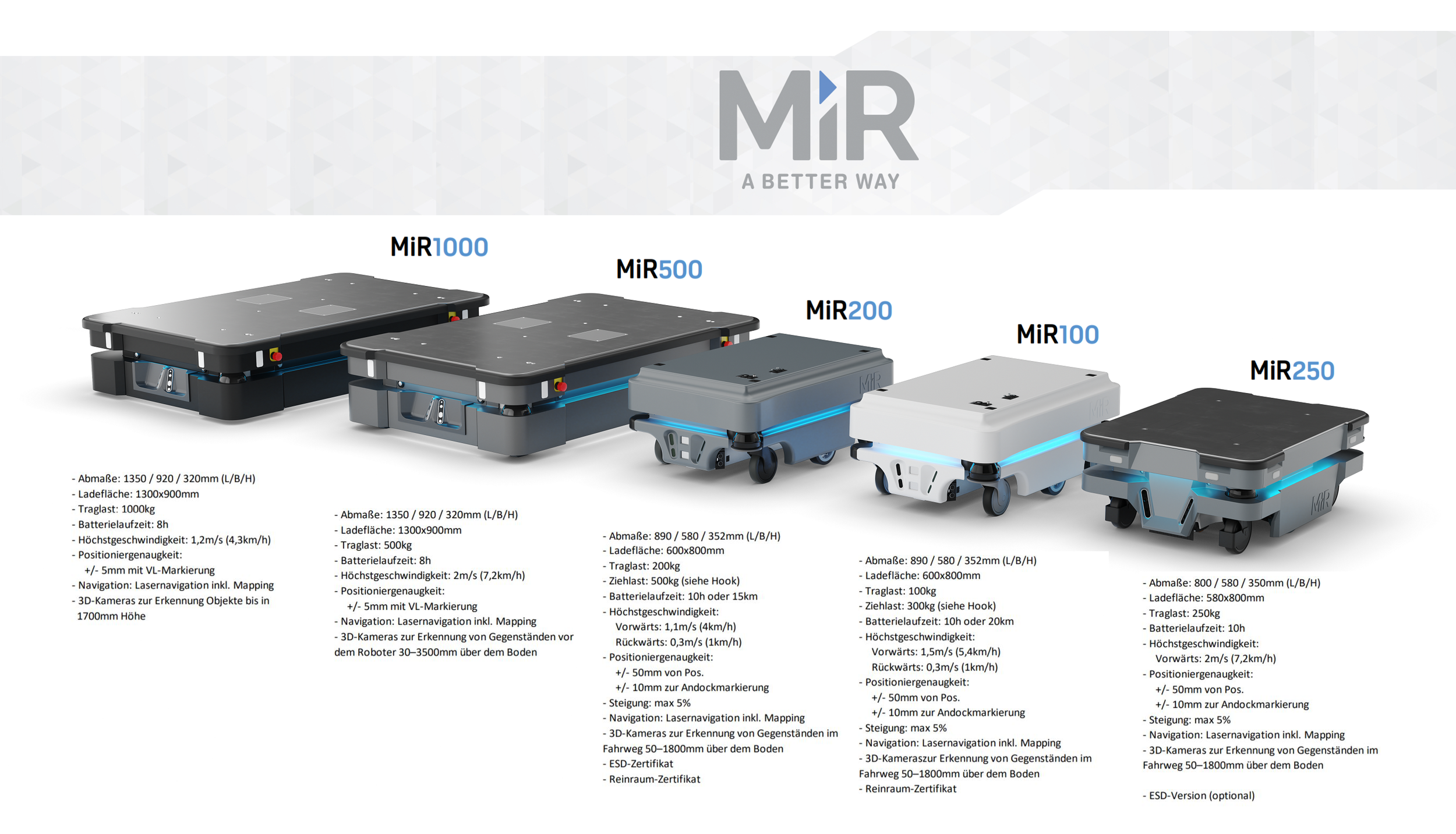Robotics Through the Cycle: Making Automation Countercyclical
MiR’s robot portfolio line up. The European robotic vendor has slowly built up a reputation for good products, software and overall reliability.
Credit: MiR
Designing robots and contracts that flex when the market doesn’t
Automation projects are often green-lit in boom times and delivered into more cautious markets. That timing mismatch exposes a common weakness: unit designs and commercial terms that assume today’s product mix, headcount and confidence will hold for years. The countercyclical play is to treat a robot—a mobile unit or arm, controller, EOAT, sensing and safety—as a reconfigurable asset, and to treat the business model as a shock absorber rather than a one-off transaction.
The technical side starts with modularity. Units built around standardised I/O, quick-change EOATs, and parametric “recipes” for motion and vision are easier to redeploy when SKU assortments swing. Vision models that can be tuned without rewriting programs, and configurable safety zones that don’t require re-fencing for every minor change, reduce the downtime tax on reconfiguration. A practical benchmark is whether a unit can move from one variant to another inside a normal maintenance window, with documentation that keeps safety approvals intact. On that last point, the canonical references remain ISO 10218 (robot and integration safety) and ISO/TS 15066 for collaborative operation; they are the vocabulary auditors and insurers speak when they assess changes.
The financial side is about predictability. Buyers in uncertain markets prefer commitments that can scale up or down without trapping them in yesterday’s design. That’s why robots-as-a-service (RaaS) and outcome-oriented support packages are gaining ground: recurring payments mapped to uptime, throughput bands or changeover frequency turn a portion of fixed burden into a variable service cost. Industry bodies have been explicit about this shift; both the International Federation of Robotics (IFR) and A3 describe RaaS as a way to lower adoption barriers and smooth cash flows when capital is tight.
A through-the-cycle procurement strategy then reads like portfolio management, not a single bet. Buyers keep a spine of proven units for stable, high-volume tasks, and mix in flexible units that are pre-qualified for emerging SKUs or seasonal peaks. Integrators become long-horizon partners rather than project-by-project bidders; programmes such as A3’s Certified Robot Integrator framework formalise competency and safety practices so buyers can reuse diligence across downturns and upturns alike.
Go-to-market, expressed conversationally, is shifting away from “we can automate this one task cheapest” to “we can keep this work predictable even when your product and labour inputs move around.” Vendors who can show the paper trail—risk assessments, validation scripts, change logs—and who anchor their service catalogues in recognised safety standards are easier to buy from in a jittery boardroom. OSHA’s technical guidance helps here too, because it aligns terminology across engineering and EHS teams (for example, calling EOAT by name and making clear what a complete robot system includes).
There is, finally, a cultural element. The vendors that keep cadence during slowdowns—shipping small but meaningful software improvements, publishing reliability notes, and pre-qualifying alternates for parts at risk—become the default choice when the cycle turns. Countercyclical success isn’t about contrarian bravado; it’s about designing units and contracts that remain useful across the whole business cycle, and proving it with evidence buyers can trust.
